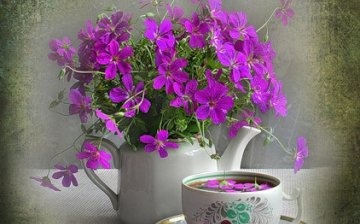Forest geranium
Forest geranium, as its name implies, mainly grows in forests, but it can also be found in ravines, in meadows and among bushes. The forest geranium itself is very bushy, if it grows in massifs. The plant blooms from the end of spring with small flowers that can be lilac, pink or purple, and has beautiful leaves.
Forest geranium is used in folk medicine as a medicinal plant, as well as as a decorative component in landscape design.
As a medicine, all parts of geranium, which include tannins and alkaloids, are used in the form of infusions against diarrhea, enterocolitis, dysentery, bleeding in different parts of the body, for gout, rheumatism and urolithiasis. Infusions have anti-inflammatory, hemostatic, analgesic, antiseptic and astringent properties. Outwardly, an infusion of forest geranium is used for disinfection, rapid healing of wounds and ulcers, for relieving itching, against baldness and for removing calluses.
To decorate the garden, forest geraniums are sown in open ground in spring, then the plant propagates by self-sowing. The height of the plant is usually no higher than 60 cm, it looks very decorative as an independent element, but it is more popular in groups with other plants and Moorish lawns. Forest geranium loves partial shade or shady places with fertile soil. Unpretentious, however, responds well to competent care: timely feeding, watering, removal of all wilted flowers. After the final flowering, the plant can be cut at the root, which will give an impetus to new growth and flowering.



